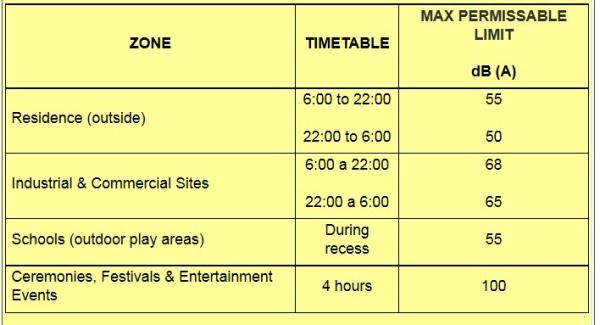Environmental noise is everywhere in Mexico, from traffic and fiestas to garbage collection and gas delivery. For more examples, see The distinctive sounds of Mexico’s towns and cities and The Sounds of Mexico. The traffic whistles made by police are an important subset of the sounds in any Mexican town or city. They have a mini-language of their own, explored in this MexConnect article: Did you know that different traffic whistles in Mexico mean different things?
This 3 minute Youtube video is a fun introduction to some of the Sounds of Mexico City though it must be admitted that some of the sounds are far more melodious than others:
Sounds and whistles may be very useful, but exposure to environmental noise can have deleterious effects on an individual’s well-being. Research in many countries has supported legislation to limit people’s exposure to loud noise on the grounds that such exposure can seriously damage health. Working days are lost and the resulting healthcare costs are considerable.
For example, a Spanish group, The National Association Against Noise Pollution, claims that the volume of music blasting out of automobile speakers makes many of that country’s younger generation “candidates for deafness”. The Association has lobbied for “coherent and efficient” legislation to prevent this modern urban environmental problem. It wants buildings with improved sound insulation and building codes which take account of the “sound maps” of each city.
Environmental noise, even if not sufficiently loud to damage our hearing, can make communication much more difficult, not to say frustrating, and can also interfere with our concentration, increasing the likelihood of potentially dangerous situations in the workplace or on the road. Excessive noise can increase stress and provoke fatigue.
What level of noise is safe? Three factors come into play. First, how intense, or loud, the noise is. This “noise level” is relatively easy to record and is measured in decibels (dB). The second factor is how long the noise lasts – the duration of any particular noise makes a huge difference to its effects on our hearing system. This is also relatively easy to quantify. The third factor – our individual susceptibility to noise – remains extremely difficult to predict in advance, meaning that noises that prove innocuous for some members of the family may permanently damage the hearing of others.
The following list indicates the peak decibel level (dBA) of various recreational and environmental noises:
- Normal breathing: 10
- Average home interior: 50
- Conversational speech: 65
- Vacuum Cleaner: 85
- Lawn Mower: 95
- Video Arcade: 105
- Car horn: 110
- Center of Guadalajara: 110
- Screaming child: 115
- Chain saw: 125
- Automobile Stereo: 125-155
- Fireworks (at range of 3 feet or 1 meter): 162
- Hand gun: 165
This list clearly suggests that it is unwise to spend all day mowing the lawn or vacuuming your house, let alone using a chain saw or cruising the streets with your car stereo turned up high!
The World Health Organization (WHO) currently considers that 65 decibels (65 dB) should be the maximum noise level to which people are exposed for any prolonged period of time such as a working day. It estimates that at least 120 million people worldwide, mainly city residents, are suffering from hearing problems caused by exposure to excessive noise.
Mexico’s official noise norm NOM-081-SEMARNAT-1994 was first published in 1995 and follows the WHO guidelines. By comparison, the U.S. Occupational Safety and Health Administration standards are a maximum 8 hours exposure to 90 dB, 2 hours exposure to 100 dB, 1 hour to 105 dB or 15 minutes to 115 dB.
 In November 2013, Mexico modified the technical details attached to its noise norm, and issued a new chart (see above) showing the maximum permitted noise levels in a variety of different settings. Note that the limits apply to “fixed sources” of noise, not to the occasional passing vehicle with loud-speakers!
In November 2013, Mexico modified the technical details attached to its noise norm, and issued a new chart (see above) showing the maximum permitted noise levels in a variety of different settings. Note that the limits apply to “fixed sources” of noise, not to the occasional passing vehicle with loud-speakers!
The new rules are welcome. As John Pint eloquently puts it in New Federal Norms list decibel limits, this legislation “gives ordinary people a chance to defend themselves from Acoustic Terrorism.”
Related posts:
- Mexico’s urban air pollution remains the worst in Latin America
- Have big cities in Mexico succeeded in meeting people’s needs?
2 Responses to “Noise pollution in Mexico”
Sorry, the comment form is closed at this time.
What about barking dogs at night? What can be done. (Puerto Vallarta)
I have just spent a month in Belgium near to 16 Mexican university students. The normal level of noise made by these kids shocked the people around them and I’m only taking about their talking, laughing noise levels not their screaming in bars at the World Cup games which unnerved several dozens of people around them.
And to Andrew about the dogs— I’d advise old unefficient air conditioners to drown out the sound…. sorry..